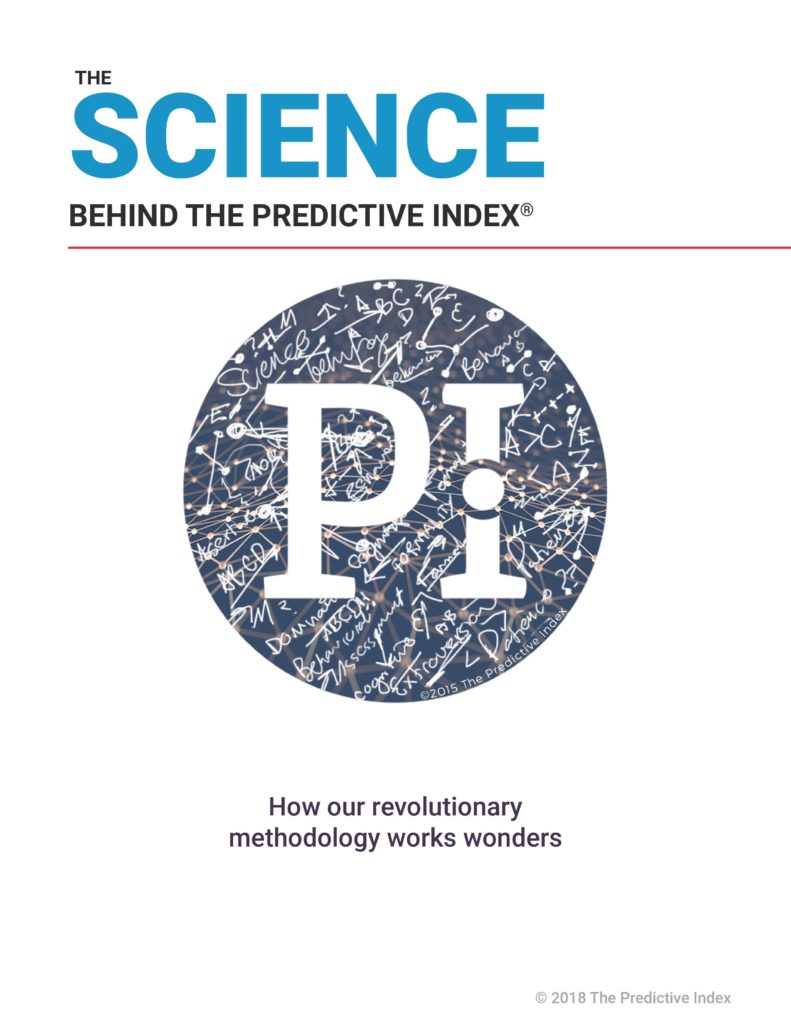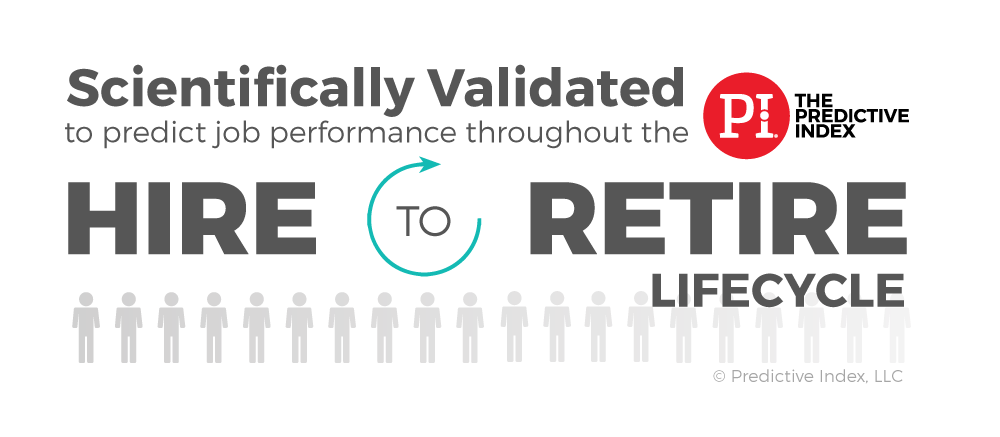SCIENCE
PSYCHOMETRICS AND PREDICTABILITY
SIMPLY FACTS - ADVANCED SCIENCE
40+ million people have been assessed worldwide.
10,000+ clients are applying the assessments worldwide.
350+ validity studies that establish statistically-valid correlations to key workplace outcomes such as tenure, turnover, sales and customer satisfaction have been conducted by the PI science team.
We know it works and we can scientifically prove that it works.
PSYCHOMETRICS.
What is it all about?
Unlike tangible fields where you can directly measure a subject —like height and weight— mental capacities and processes are invisible and therefore cannot be measured directly. Psychometrics is about building tools that indirectly but accurately measure people’s psychological make-up. Psychometric tools like PI Behavioral Assessment™ and PI Cognitive Assessment™ are built to enable us to measure the underlying personality traits and cognitive abilities of people.
PI assessments are developed following recognised psychological standards and guidelines, including the American Psychological Association (APA), the Society for Industrial and Organizational Psychology (SIOP), and the International Test Commission (ITC). These guidelines provide a framework for test construction and the proper use of assessments. The Predictive Index provides well-researched, valid and reliable employee assessments which can help support clients’ legal compliance with the EEOC and the Uniform Guidelines on Employee Selection Procedures.
(PI BA)
HISTORY
PI BA is a theory-based self-report measure of normal (non-clinical) adult personality, built and validated extensively and exclusively for use within occupational and organisational populations.
Revisions, iterations and updates of the assessment are ongoing and have occurred in 1958, 1963, 1988, 1992 and 2016.
(PI BA)
METHODOLOGY
Assessment takers are presented with two pages each containing a question followed by the same 86 adjectives. The question on page 1 asks the assessment taker to endorse adjectives that they feel describe the way they are expected to act by others (the Self-Concept domain) and the question on page 2 asks them to endorse adjectives they feel really describe them (the Self domain).
The responses are tallied to obtain scores for the appropriate factor to produce the Self, Self-Concept and Synthesis patterns which are displayed graphically.
(PI CA)
HISTORY
PI CA is a cognitive assessment tool that measures an individual’s general cognitive ability and primarily serves as an assessment tool in recruitment and talent management processes.
Revisions, iterations and updates of the assessment are ongoing.
(PI CA)
METHODOLOGY
PI CA employs a Linear-on-the-Fly testing (LOFT) design, which is marketed as a “dynamic assessment design”. LOFT is a computer-based test format where items are randomly selected from predetermined subsets (or buckets) every time a test is issued, resulting in unique combinations of the questions.
(PI XP)
HISTORY
Commercialised in 2020. PI XP is built on an algorithm identifying the items with the highest impact on engagement within the organisation.
PI XP is designed to measure 1) overall engagement, 2) the employees’ perceptions of their day-to-day job, 3) the perceptions of their direct manager, 4) the perceptions of the people they work with daily, and 5) the perceptions of their overall work experiences at the organisation.
(PI XP)
METHODOLOGY
The assessment is completed by the existing workforce rating (Likert scale rating) the extent to which they agree on the presented item.
The results reveal % favorable (agree and strongly agree) compared to an organisational benchmark and to an external benchmark.
Based on the responses the managers are provided reports highlighting 3 strengths and 5 blind spots. The selected blind spots are the ones with the highest impact on engagement and include suggestions for actions to improve supported by PI reports.
HISTORY
Team Discovery is a tool containing two parts 1) explore individual strengths and potential blind spots on an individual level and at a team level (Team Type) to increase awareness and appreciation of diversity to ultimately build effective, cooperative, and high performing teams 2) define the strategic priorities to identify the areas where the team members need to emphasize current behaviour or stretch to execute the identified strategy.
Team Discovery is based upon Cameron & Quinn’s interpretation of the Competing Values Framework a well-known framework for understanding organisational culture.
METHODOLOGY
Behind the Team Type identification algorithm lies an extensive literature review and test development process to ensure that the objectives were sound, representative of their theorised quadrants, empirically related to the four primary factors of the PI Behavioral Assessment, and valid in defining strategic direction.
The behavioural patterns of each team member are considered in aggregate, with the Team Type determined by the overall emphasis. The strategic emphasis is defined through a subset of the 20 team objectives in PI software.



